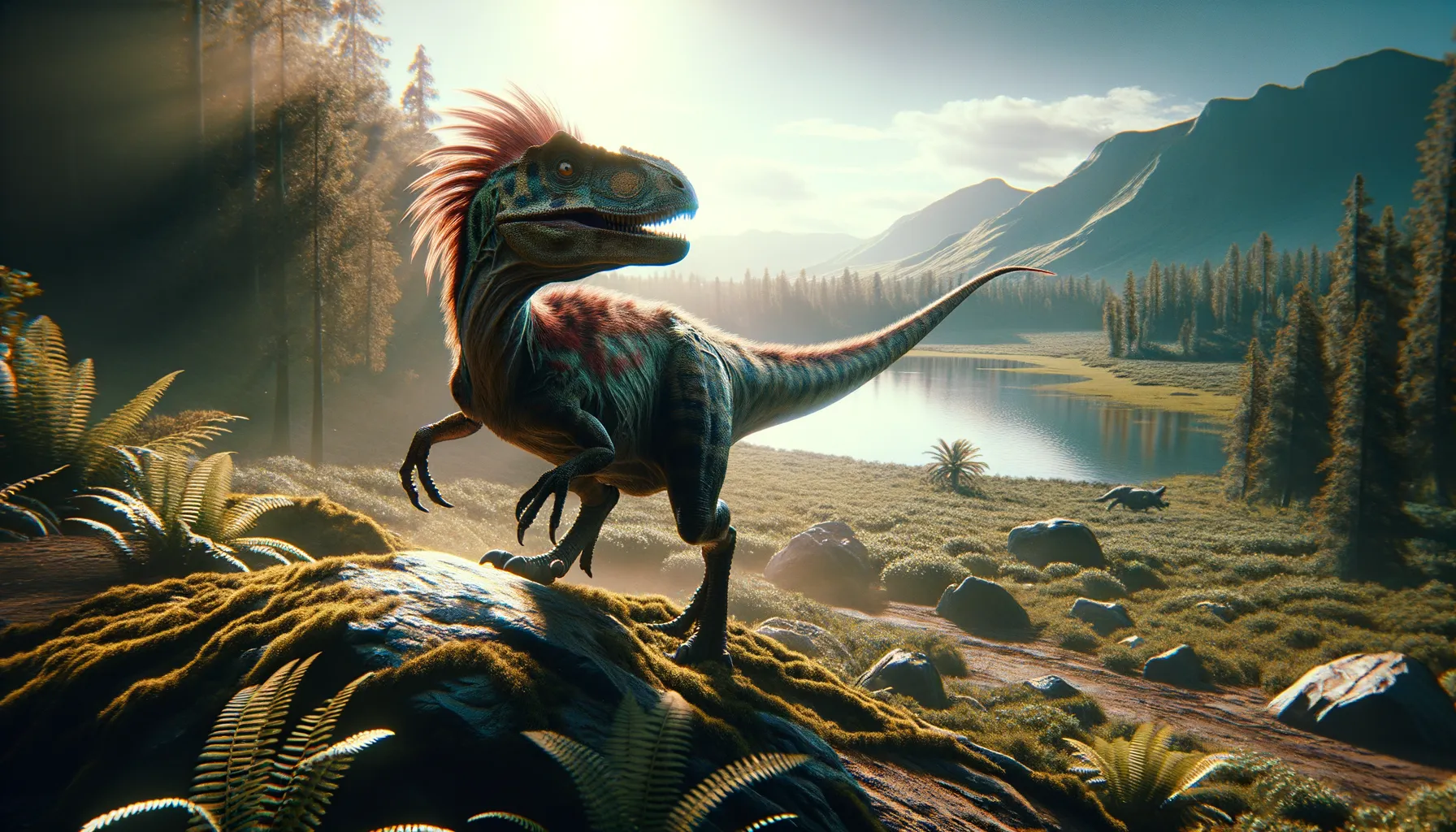
Stokesosaurus
Swift and agile predator of the Jurassic wilds.
Period
Jurassic
Length
Roughly 3 to 4 meters long.
Height
Around 1 meter tall.
Weight
Approximately 30 to 45 kilograms.
Stokesosaurus was a small theropod dinosaur that lived during the late Jurassic period. Known for its swift agility, it was a bipedal carnivore, preying on smaller vertebrates. Fossil evidence suggests it had possible feathers and sharp claws, indicating its predatory lifestyle. As one of the earlier tyrannosauroid ancestors, it provides insight into the evolutionary path leading to larger, more well-known cousins like Tyrannosaurus rex.
Diet
Stokesosaurus was a carnivore with a diet mainly consisting of small vertebrates. It likely preyed on smaller dinosaurs and reptiles, scavenging at times when necessary.
Hunting
Stokesosaurus utilized its speed and agility to hunt, striking quickly to catch its prey. It may have used ambush tactics, relying on its ability to swiftly maneuver through its environment.
Environmental challenges
Living during the late Jurassic period, Stokesosaurus faced environmental challenges such as competition for food with other theropods. Climatic changes could have affected its food sources and habitat conditions. It also needed to evade larger predators, requiring adaptation to avoid becoming prey itself.
Speed
Moderate, capable of quick bursts for prey capture.
Lifespan
Estimated around 10 to 20 years.
First discovery
Discovered in the late 20th century by James Madsen in Utah.
Fun Facts
- Stokesosaurus is named after Utah geologist William Lee Stokes, who helped discover its fossils.
- This dinosaur lived during the Late Jurassic period, about 155 to 150 million years ago.
- Stokesosaurus was a small theropod dinosaur, meaning it walked on two legs and was likely a carnivore.
- Fossils of Stokesosaurus have been found in the western United States, particularly Utah and Wyoming.
- It's thought to be closely related to other well-known theropods like T. rex, although it was much smaller in size.
- Stokesosaurus had long legs which suggest it was likely a fast runner, helping it catch prey or escape predators.
- Unlike some of its relatives, Stokesosaurus had relatively large arms, indicating they might have played a role in hunting or holding prey.
Growth and Development
Stokesosaurus likely hatched from eggs and experienced rapid growth to reach maturity quickly. Juveniles probably had different dietary needs and relied more on smaller prey. Like many dinosaurs, its skeletal structure would have developed distinct growth lines, reflecting its changing physiology as it aged.
Habitat
Stokesosaurus lived in a semiarid environment with scattered vegetation, consisting of conifers and ferns. The area likely featured seasonal streams and rivers that supported various forms of life. Its surroundings provided cover and resources needed for survival and hunting.
Interaction with other species
Stokesosaurus interacted with a variety of other dinosaur species, competing for resources and space. Its role as a small predator placed it in the middle of the food chain. This interaction likely influenced its adaptive strategies and behavior, such as group hunting or solitary living.
Natural lifespan
The typical lifespan was around 15 years.
Reproduction
Stokesosaurus laid eggs, likely in clutches in well-hidden nest sites. Parental care is speculative, but it might have protected its young until they were capable of fending for themselves. The size of the eggs and clutches remains uncertain due to limited fossil evidence.
Social behaviour
While it's unclear how social Stokesosaurus was, it might have lived in small family groups. Such groupings could have offered advantages in hunting and protection from larger predators. Its behavior might resemble that of modern-day pack hunters like some birds of prey.
Fossil locations
Fossils of Stokesosaurus have primarily been found in North America's Morrison Formation, particularly in western United States sites such as Utah. These discoveries have provided valuable insights into its anatomy and ecological role during the Jurassic period.
